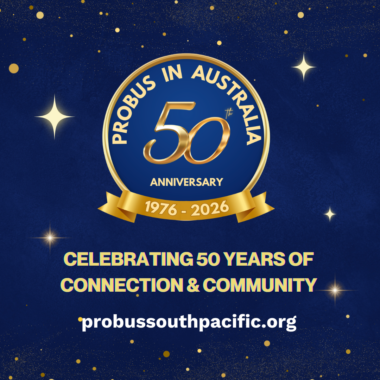New jobs for 200,000 people, extending transport connections, transitioning to net zero and creating a diverse, 24-hour economy are all part of a 10-year plan to keep Sydney at the forefront of the Australian economy.
The City of Sydney’s Economic Development Strategy 2025-2035 extends the City’s work to support an innovative, sustainable, inclusive economy.
At its July meeting, Council will consider the Strategy, which will see more than $540 million directly invested in economic development outcomes, as well as the Lord Mayor’s proposal for $100 million in public domain works to support an extended light rail from Parramatta Road to Green Square.
The Strategy was drafted in consultation with the Business, Economic Development and Covid Recovery Advisory Panel members, including Committee for Sydney, Business Sydney, Property Council of Australia, University of Sydney, Supply Nation, Canva and Greenhouse.
Lord Mayor Clover Moore AO said that the Strategy aimed to boost Sydney’s existing $142 billion yearly economic output and cement Australia’s gateway to the world as one of the best places to live, work and visit.
“Since 2004, jobs located in the City of Sydney have increased 162 per cent and our local economy has grown by $64 billion, or 82 per cent. That now exceeds pre-COVID levels and accounts for more than 22 per cent of the entire NSW economy,” the Lord Mayor said.
"Australia’s economy is changing. We need to stop relying on digging things out of the ground and transition instead to sustainable and inclusive industries. We must create the space and conditions in our cities to accommodate the jobs of the future, so that innovation thrives and the world’s best and brightest minds work here.
“Investing in Central Sydney is essential to maintaining the economy’s buoyancy and success while invigorating our city.
“Over the last decade, the City of Sydney built many major projects to support our local economy, including the George Street revitalisation, the 30,000 home Green Square urban renewal project and the Central Sydney planning review, which unlocked 2.9 million sqm of employment floor space.
“While our economy has shown great resilience and an ability to adapt, climate change, rising inequality and economic uncertainty remain as underlying vulnerabilities. If unaddressed, these challenges will limit our city’s ongoing prosperity and fairness.
“This strategy will contribute significantly to ensuring Sydney remains the leading innovation and knowledge-based economy in the nation, renowned for its creativity and productivity, with an economy that is robust, resilient, innovative and dynamic.”
The strategy maps out the role of the City of Sydney across 4 scales and proposes 33 high-level actions to address systemic challenges, increase economic resilience and boost long-term prosperity.
4 scales – global Sydney, Australia’s economic heart, city of distinct precincts and strong local neighbourhoods
The strategy seeks to promote Sydney globally and to lead and guide collaboration to strengthen its competitive advantages.
With City of Sydney responsible for 6% of Australia’s economy, the strategy highlights the importance of maintaining this stance by improving connections and integration with Greater Sydney, NSW and the rest of Australia.
The plan underscores Sydney as a cluster of 8 highly-productive economic precincts:
- Harbour precinct – iconic destinations covering The Rocks to the Sydney Opera House, the Royal Botanic Garden and Barangaroo, which are so important for the visitor economy and experience
- City north – Australia’s commercial and financial heart and an economic hub of the Asia-Pacific
- City south – cultural diversity throughout Darling Harbour and Haymarket, bringing streets to life day and night
- Tech Central – incorporating world-leading universities, cultural institutions, startup incubators, home-grown and international innovation and tech companies
- Eastern creative – the focal point for Sydney’s creative and cultural landscape taking in Surry Hills, Darlinghurst and Oxford Street
- Pyrmont – home to multiple media outlets, startups, Google Australia, the Lyric Theatre, Maritime Museum and the new Sydney Fish Markets
- Entertainment and recreation – showcases creative and sporting excellence and major events
- Southern enterprise – the last remaining industrially zoned land in the City of Sydney’s area, it will provide essential urban services and production spaces.
Providing fertile ground for innovation and creativity, the success of these precincts further enhances their attractiveness to like-minded business. The strategy aims to connect and encourage collaboration, reinforce specialisation and promote experimentation to strengthen the performance of these areas.
A framework that emphasises the importance of economic inclusion will ensure the City of Sydney’s work supports inclusive opportunities and a vibrant street life that enhances the overall economic strength of the city.
"This strategy articulates an exciting future for Sydney,” Eamon Waterford, CEO of the Committee for Sydney and advisory panel member said.
"The objectives and actions in the strategy will mean more startups, more vibrancy, more global connections and more access for everyone.
"I'm especially excited by the potential of linking the extension of light rail through the heart of Tech Central – combining placemaking, access and great jobs.”
Momentum projects
Bringing the strategy to life are 8 momentum building projects that have been identified as challenges and opportunities. Through collaboration and government support, the projects will guide Sydney through an innovation-led economic transformation that targets 200,000 new jobs by 2036, with 70% of these new in knowledge and innovation intensive industries.
- Unlocking Tech Central through Broadway with public domain works to support light rail, unlock jobs growth and boost housing
- Accelerating the green economy transformation by leveraging climate tech solutions and driving innovation, investment and jobs growth will position Sydney as a global sustainable finance destination
- Exploring localised circular economies with small business collectives to find precinct-wide sustainability measures and promote local innovations
- Supporting Indigenous enterprise through the full business lifecycle
- Putting vacancy to creative use, working with property and cultural sectors to match underutilised commercial space with creatives
- Retaining international student talent by providing pathways into employment and filling critical skills gaps
- Evolving the visitor economy by reviewing visitor needs in a post-pandemic world and partnering with the NSW Government to better design and coordinate services
- Promoting vibrant streets by developing more effective and efficient ways to activate local streets in partnership with small business collectives.
“Our city’s economic growth, and our ability to ensure it becomes an ever more inclusive, sustainable and innovative place, will rely on its vibrancy, liveability and appeal, and its ability to inspire joy and delight by delivering world-class experiences for the people who live, work and visit here,” Matt Jones, advisory chair and co-founder Four Pillars Gin said.
“I’m therefore thrilled to see the City of Sydney’s economic development strategy for the next decade is focused so strongly on the precincts and neighbourhoods that will ensure the Sydney of the future is a great experience city, with vibrant street life, a 24-hour economy, and diverse and deep cultural experiences to engage with.
“From transforming Broadway through the extension of light rail to creatively reimagining the use of vacant spaces in our city, I’m thrilled to see how the panel’s input and insight has resulted in a dynamic and action-orientated strategy for our city’s future growth.”
Over the last two years, the City of Sydney has extensively consulted its communities on the strategy including 11 Council briefings, speaking with 175 businesses, hosting multiple community and industry forums, running 4 business chamber roundtable discussions, 2 yearly business needs surveys and an online public forum on Sydney Your Say.
The strategy will be discussed next week at a free CityTalk – What is driving Sydney's future prosperity?
Read the draft strategy at cityofsydney.nsw.gov.au which will be considered at the Council’s July meeting.
The strategy will be open for community feedback from 2 August to 30 September. The final strategy is expected to be presented to Council by the end of 2024.
Media contact Elaine Kelly. Phone 0477 362 550 or email [email protected]
For interviews with Lord Mayor Clover Moore, contact Paul Mackay.
Phone 0436 816 604 or email [email protected]



